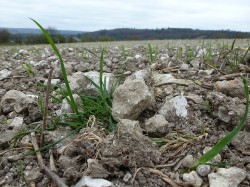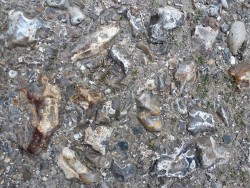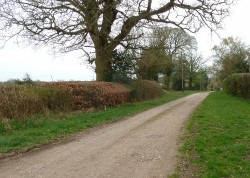Flint roads are still widely found throughout the Chilterns.
Alas, they were once commonplace, though in these days of increased traffic more and more traditional flint roads are being tarmacked over or covered with modern materials.
 For centuries weathered field flints were brought to the surface of local fields by ploughing. Here they could be hand-picked and used in the construction of simple, durable roads that have lasted for centuries.
For centuries weathered field flints were brought to the surface of local fields by ploughing. Here they could be hand-picked and used in the construction of simple, durable roads that have lasted for centuries.
At one time, to qualify for parish relief, what today we call welfare payments, the poor, especially women and children, were required to pick field flints from surrounding fields for use in local road and house construction.
Flint is, in today’s terms, highly sustainable, locally sourced and carbon neutral. What’s more, removing it from surrounding fields improves crop yields whilst using it to make flint roads improves local transport.
 Beyond the practicality of flint, it is aesthetically extremely pleasing. Flint roads look just right next to the stony fields from which the flints originally came. The mixture of browns, creams, whites and flinty blacks is the archetypal palatte of the Chilterns and always looks right whether surrounding fields are ploughed or in crop.
Beyond the practicality of flint, it is aesthetically extremely pleasing. Flint roads look just right next to the stony fields from which the flints originally came. The mixture of browns, creams, whites and flinty blacks is the archetypal palatte of the Chilterns and always looks right whether surrounding fields are ploughed or in crop.
Unfortunately, weathered field flint is increasingly hard to come by. Farmers in the Chilterns do continue to harrow their fields and, here and there, flint is still gathered in this way to create new flint farm tracks or repair existing ones. But owners of centuries-old private flint roads now find that even should they wish to make repairs using traditional weathered field flints, the cost of doing so is prohibitive.
Because the process of gathering weathered flint is labour intensive, and the demand for it is relatively low, other modern road-building aggregates are comparatively much cheaper. So today we find aggregates trucked in from perhaps hundreds of miles away are increasingly used to fill-in potholes and cover over traditional Chilterns flint roads.
What an irony that we are surrounded by field flint in the Chilterns, but as an aggregate for supply it’s virtually impossible to find! A material that for centuries has been used by local people to make local roads, is no longer locally available.
 It’s a real shame to lose the local character of a place and flint roads are such an important part of what make the Chiltern Hills feel so special. Unfortunately, until more people recognise the special value of these ancient flint roads and they are given some statutory protection to ensure their preservation, more and more will simply disappear under the advancing tide of tarmac.
It’s a real shame to lose the local character of a place and flint roads are such an important part of what make the Chiltern Hills feel so special. Unfortunately, until more people recognise the special value of these ancient flint roads and they are given some statutory protection to ensure their preservation, more and more will simply disappear under the advancing tide of tarmac.